









| Tipula of the Lunatipula subgenus (Tipula (Lunatipula) sp (Edwards, 1931)) |










|
|
Scientific name: Tipula (Lunatipula) sp (Edwards, 1931) Common name: Tipula of the Lunatipula subgenus French name: Tipules du sous-genre Lunatipula Order: Diptera Family: Tipulidae Wingspan : Biotope: Meadows, gardens. Geographic area: Observation period : |
Tipulidae, also called Crane Flies, are remarkable by their very long and fragile legs which can easily detach from the body. You can recognize the members of the Tipulidae family by the V-shape suture of the mesonotum, on the upper side of the thorax between the base of the wings, by their long snout and by they wing veins with two anal veins reaching the edge of the wing. The Crane flies of the Tipula genus are characterized by the sub-costal vein joining the radial vein (Tipulinae family), by the presence of a discal cell, by long legs and by thread-like antennae with 13 articles. The Lunatipula subgenus gathers all the species showing a whitish lunule, just before the stigma, reaching or exceeding the position of the discal cell. There are many species in this subgenus including Tipula lunata, Tipula cava, Tipula bullata, Tipula fascipennis, Tipula vernalis, etc. There are keys to tell species apart. There are generally split for males and females. You need pictures of the wing veins, of the thorax stripes, of the antennae to evaluate the colour of the first articles and of the abdomen tip, side view if possible. This will also require some experience. I have tried and I have been quickly stuck … |
| [To know more about the Tipula of the Lunatipula subgenus] [Next picture] [Top] |
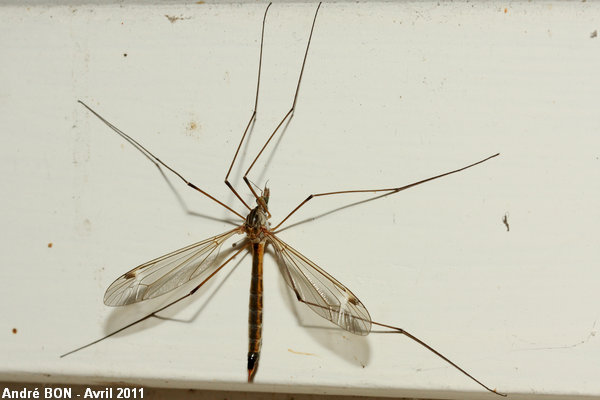
|
Having found this Crane fly inside my workshop, I have decided to try to tell the species apart. So I have shot close-up pictures of the different parts of its anatomy. I have been shortly stuck and I had to require the help of Alain Ramel who has indicated to me that this one is a Crane fly of the Lunatipula subgenus, without any chance to identify further to the species. |
| [To know more about the Tipula of the Lunatipula subgenus] [Next picture] [Previous picture] [Top] |
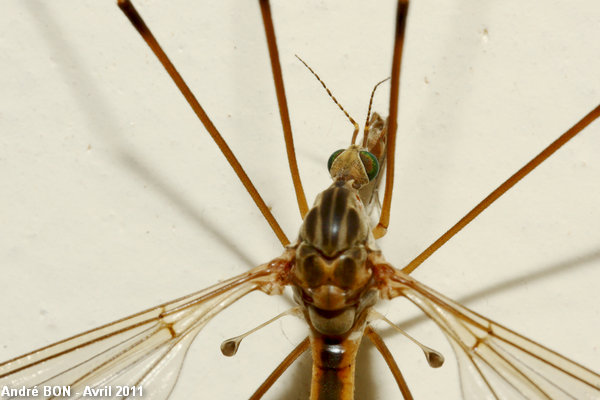
|
I have used this picture (not resized) to count the number of articles of the antennae and then confirm one member of the Tipula genus. Surprisingly I was always counting 12 while I was expecting at least 13. My mistake has been to forget the pedicel which is a very short article between the scape (first article at the base of the antenna) and the flagellum of 11 articles. So the 13 articles do indicate one member of the Tipula genus. According to Alain Ramel, a yellow colour on the first two antenna articles would have indicated Tipula lunata, but this is not the case here. |
| [To know more about the Tipula of the Lunatipula subgenus] [Next picture] [Previous picture] [Top] |
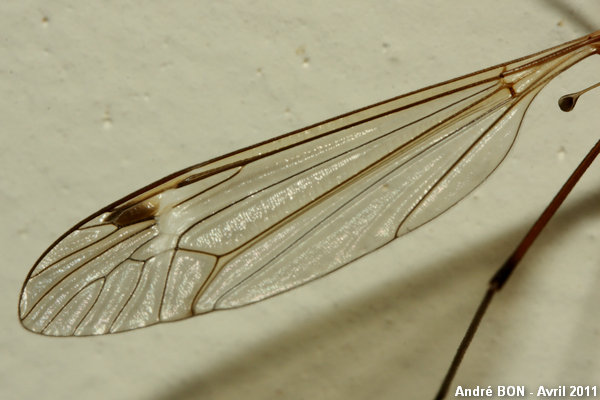
|
This picture clearly show the whitish lunule, just before the stigma, reaching the discal cell and even extending slightly beyond. This is the typical characteristic of the Lunatipula subgenus. |
| [To know more about the Tipula of the Lunatipula subgenus] [Next picture] [Previous picture] [Top] |
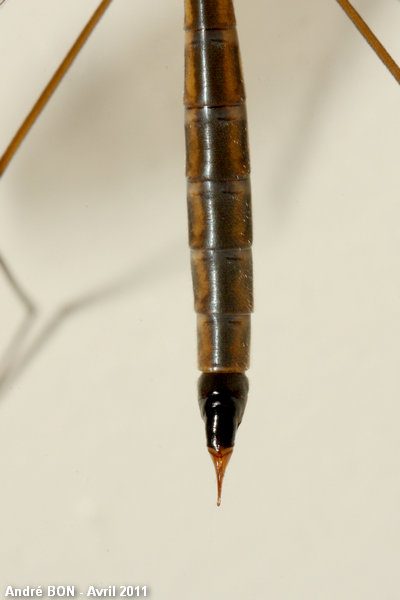
|
Here is a view of the ovipositor of this female. I have shot this picture with the easiest angle of view, so this is an upper side view. I have noticed that the various keys are often based on side views. I will remember this next time. |
| [To know more about the Tipula of the Lunatipula subgenus] [Next picture] [Previous picture] [Top] |
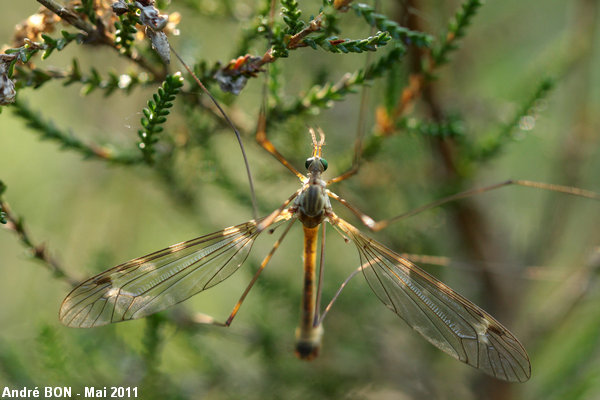
|
Pay attention, the shadows of the plants are drawing marks on this Crane Fly. The large whitish lunule is clearly visible on the right wing, for sure this is one member of the Lunatipula sub-genus. I have been immediately stuck when I have tried to use one key to tell species apart. The shape of the abdomen tip indicates one male. |
| [To know more about the Tipula of the Lunatipula subgenus] [Next picture] [Previous picture] [Top] |
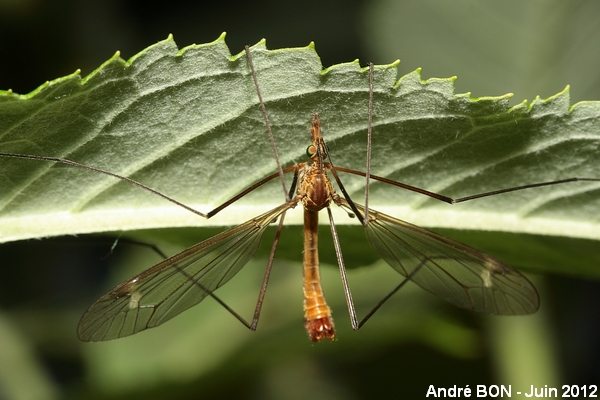
|
The first two articles of the antennae of this male are yellow. The following articles are black. |
| [To know more about the Tipula of the Lunatipula subgenus] [Next picture] [Previous picture] [Top] |
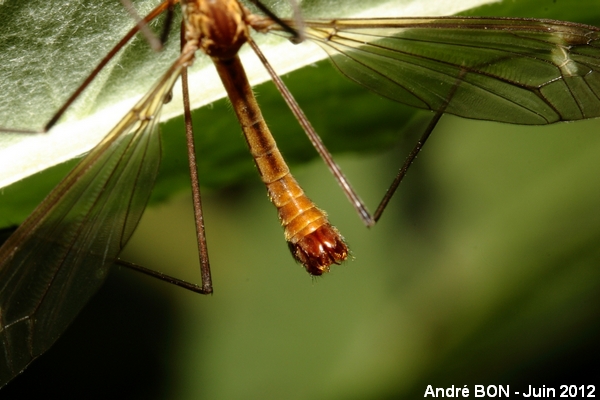
|
Like for females, a side view of the tip of this male's abdomen may have helped to progress thru the species identification key. |
| [To know more about the Tipula of the Lunatipula subgenus] [Next picture] [Previous picture] [Top] |
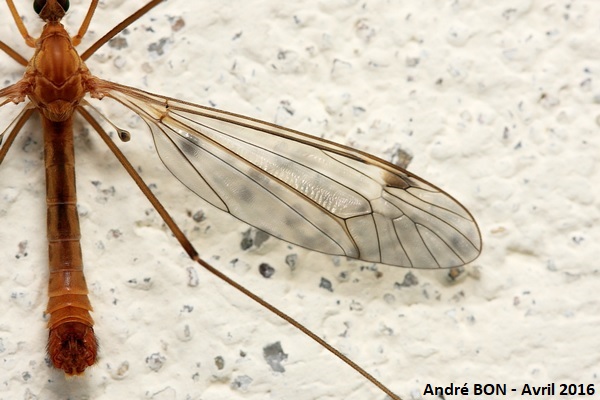
|
Here is one male of the Lunatipula subgenus as shown by its non-spotted wings and by the large whitish lunule. |
| [To know more about the Tipula of the Lunatipula subgenus] [Next picture] [Previous picture] [Top] |
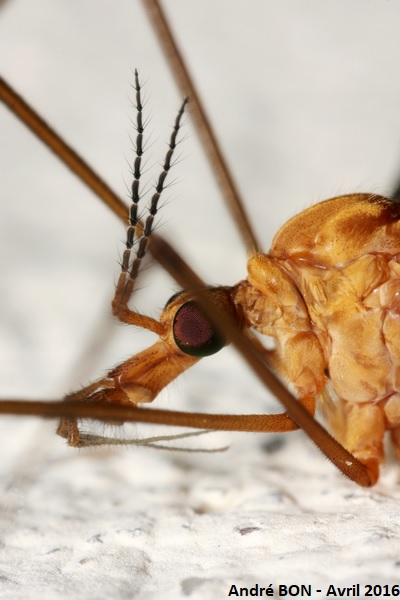
|
I tried my best to shoot pictures that may help following the identification key for males. Here is one view showing the first yellow articles of the antennae. |
| [To know more about the Tipula of the Lunatipula subgenus] [Previous picture] [Top] |
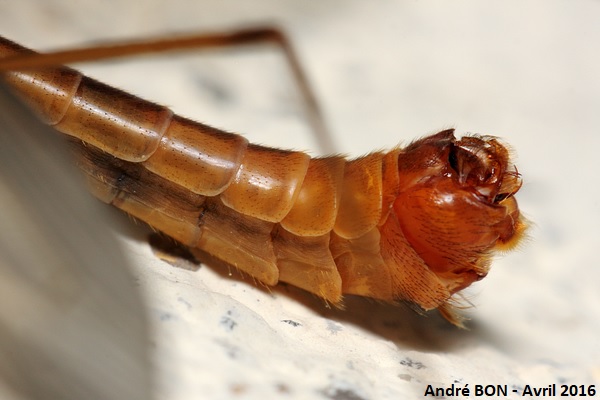
|
I shot a side view of the abdomen's tip but I didn't succeed to progress thru the identification key. This may be due to my lack of knowledge but I also think that pictures with other angles of view are required. So I will just list this one at the subgenus level and I will persevere in the hope of doing better next time. |